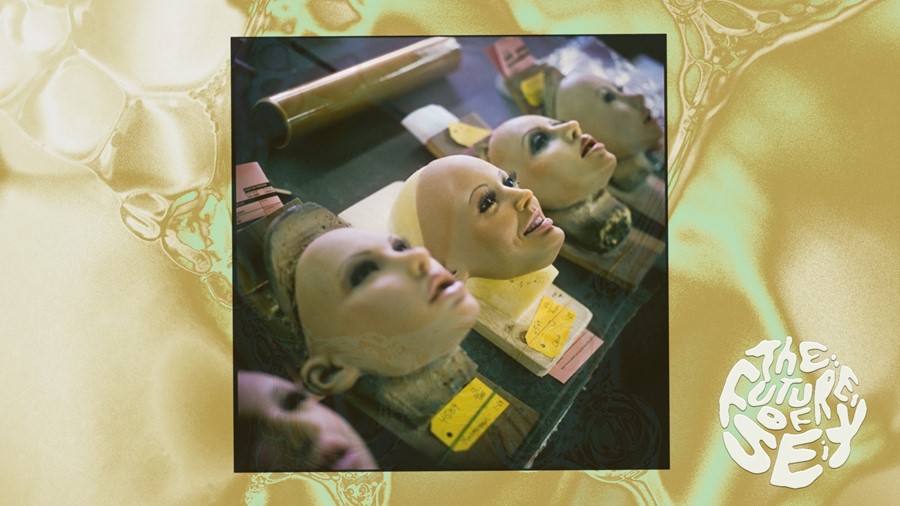Companies are working to make sex robots look more lifelike than ever before, but this raises ethical questions around appearance, age and consent
This article is part of our Future of Sex season – a series of features investigating the future of sex, relationships, dating, sex work and sex worker rights; tech; taboos; and the next socio-political sexual frontiers.
Imagine it’s 2070 and you meet someone you find very attractive. Maybe you’re at a nightclub. Maybe nightclubs don’t exist anymore. Who knows? It’s 2070. You decide to go home with this attractive person, but quickly realise they can do things that other humans can’t. You realise you’re having sex with a robot; a robot that looks and behaves almost exactly like another human being.
The idea that robots could become fully integrated into human society and indistinguishable from humans within the next century might seem far-fetched, but experts predict that this reality is not as distant as we think. Dr Ian Pearson, futurologist and author of Futurizon’s 2015 Future of Sex report, predicts that we will start to see robot sex overtaking human-to-human sex as soon as 2050.
Sex robots are already starting to look more realistic than they have done in the past. While they’re still a long way from moving and behaving like humans, their bodies can look uncannily lifelike. Robotics company LuxBotics creates service robots, including sex robots, using silicone that moves like human flesh. They are currently working to make facial expressions more realistic, although they are encountering problems with the number of motors needed in comparison to the small size of the head. “Consequently, facial expressions are limited to the most common and most wanted expressions, including happiness, flirty, surprised etc,” they explain.
Researcher of ethics in AI and robotics Piercosma Bisconti tells Dazed that studies on this topic are still sparse. “There is no example in the scientific literature of a person being deceived into thinking that a robot was a human,” he says. “We are quite proficient as humans in differentiating between humans and robots.” However, he adds that “sexual relationships are less socially codified than other social relationships (eg greeting), therefore, in principle, it might be harder to recognise robots in these situations. Still, there is no solid proof and research is ongoing.”
So far, sex robots seem to have generated more sensationalist headlines than they have customers. LuxBotics tell us that they don’t currently sell many robots for sexual companionship, but they expect sales to increase over time. When sex toy company SexualAlpha surveyed 1,729 people earlier this year, they found that 15.5 per cent of respondents had used or owned a sex robot. While advances have been made, most options currently on the market still look and react like robots or sex dolls, meaning they mostly appeal to people with niche fetishes. To become mainstream, it would be necessary for them to look more realistic, not just in their bodies, but in their faces, expressions and mannerisms.
However, this raises questions about the kind of humans we make them look like and how we tell humans and robots apart. Some have suggested that giving robots unnaturally bright green eyes or putting a logo somewhere on their skin could ensure that we can tell them apart even if they are otherwise indistinguishable. But, to enforce this, it could be necessary to introduce visual laws to regulate their appearance.
“You can imagine some fairly sensible laws coming in,” says Dr Pearson. “You can also imagine a lot of stupid, draconian laws because some politicians greatly overreact.” Many politicians take a puritanical or embarrassed approach to sex. Lack of understanding or unwillingness to discuss sex tech could lead to important issues being overlooked. For example, the main area where Dr Pearson believes laws will be needed is in controlling how old robots being sold for sex look.
Youth is heavily fetishised in the sex industry – you only have to look at the popularity of the ‘teen’ porn genre to see this. There’s already a black market for sex dolls catering to paedophiles and more realistic robots could exacerbate this issue. The ethics of this has been much debated. Some suggest that they could be an outlet for paedophiles to deter them from targeting real children while others believe they only validate paedophilic desires and put more children in danger. Some therapists even suggest that paedophiles should be prescribed child sex dolls so they can satisfy their desires more safely, but this opinion is deeply controversial.
Lawmakers in the UK and US have attempted to take action against the import of child sex robots, but the laws are vague. In 2017, the Crown Prosecution Services used an 1876 law banning the import of “obscene” items into the UK to clamp down on the importation of child sex dolls and several individuals were prosecuted. However, while it’s currently illegal to purchase child sex dolls or robots online and have them shipped to the UK, it’s not illegal to own one.
A key issue is that, of course, robots don’t age like humans do, so there’s nothing stopping someone from creating an extremely childlike sex robot and claiming that it’s 18 years old. “When it comes to making a robot look like a child, it’s very, very difficult to make an exact specification of what that would be,” says Dr Pearson. “They could argue that it’s not really a ten-year-old. It’s actually an 18-year-old. It just looks youthful. I’m sure a lot of people will try that, but that’s why we have judges.”
Consent will also come into play around creating sex robots in the likeness of existing people, from porn stars and celebrities to your ex. Imagine you reject someone in real life, and then they create a sex robot of you to sleep with instead. Visual laws could be needed to prevent this customisation without consent. Solicitor Katie Moruzzi who specialises in intellectual property law explains that in the UK and EU, under GDPR data laws, consent is defined very rigorously. “It needs to be given freely, very specifically and it needs to be informed and unambiguous. Although not explored, it is possible that the use of a person’s personal data, such as their image re-created in a sex robot, could be a breach of GDPR.”
However, like the laws around how old a sex robot appears, these regulations could be difficult to enforce. “What could become problematic is showing the designer’s intent to create a sex robot based on an individual and therefore holding them accountable,” says Moruzzi. “The designer could argue that they intended to make a female, but were not inspired by any individual in particular. With seven billion people on the planet, arguably, every sex robot could look like someone. So what degree or similarity would there need to be? And would there need to be intent to make it look like the individual?” As with all new technology, it’s likely some people will misuse it as a tactic of control and abuse.
In the coming years, as sex robots become more realistic and expansive in their appearances, these are all considerations that need to be debated. Laws are made and voted in by people with their own biases who often have an old-fashioned or puritanical view of sex. The potential is, therefore, there for the regulations leading to greater state surveillance of our sex lives. At the same time, ignorance shouldn’t stand in the way of ensuring safe and accessible sex tech, now and in the coming decades.




